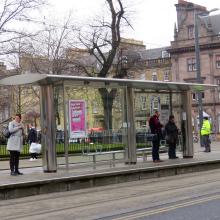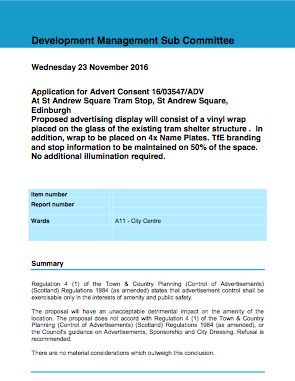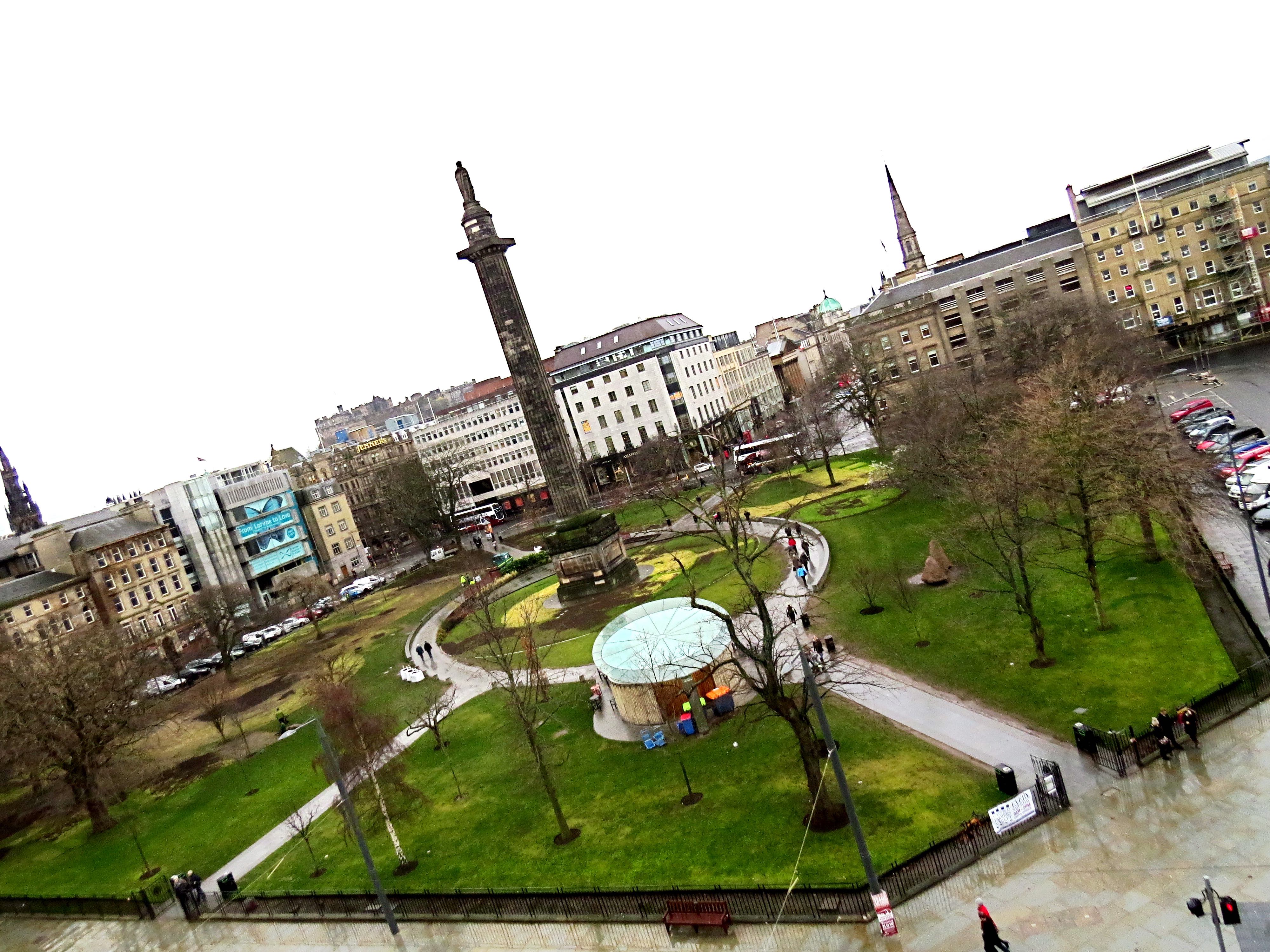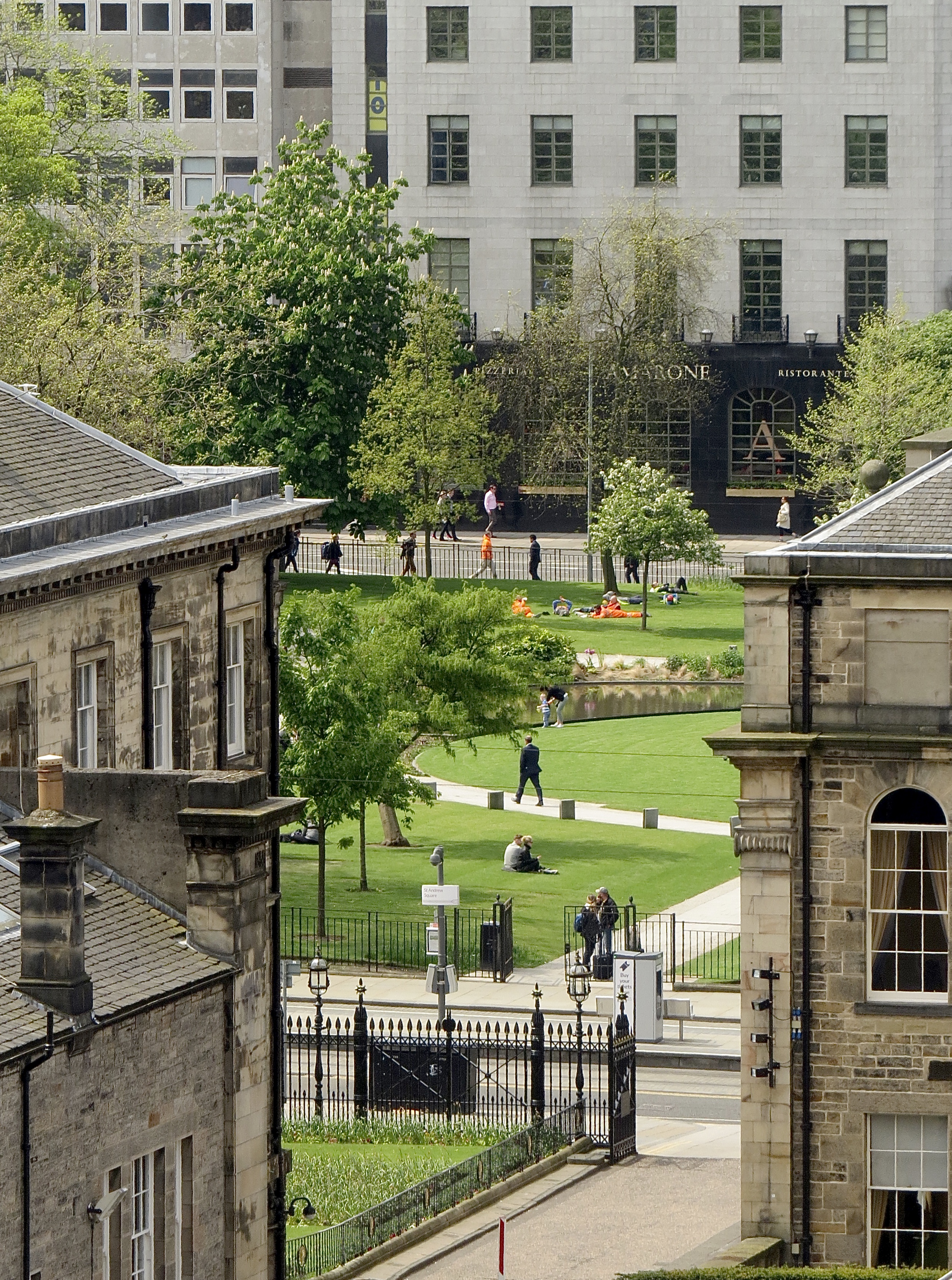
St ANDREW SQUARE SPARED
City of Edinburgh Council has turned down an application to cover the St Andrew Square tram stop in adverts.
JCDecaux had applied for permission to place two vinyl wraps (3200mm x 3500mm) on the shelter’s glass (visible from both sides), and also on four ‘name plates’ (Ref. 16/03547/ADV). TfE branding and information would have occupied 50 per cent of the space.
However, John Bury (Head of Transport and Planning), found that:
The proposal does not accord with Regulation 4 (1) of the Town & Country Planning (Control of Advertisements) (Scotland) Regulations 1984 (as amended), or the Council's guidance on Advertisements, Sponsorship and City Dressing, as it will have an unacceptable detrimental impact on the amenity of the location, in respect of the harm it would do to the historic environment, architectural and cultural interest of this part of the city being in the New Town Conservation Area, Old and New Towns World Heritage Site, and due to the proximity to a number of a listed buildings.
This is a heartening exhibition of backbone from a Council which all too often monetises in haste then rues at leisure. Many hope officials and elected representatives will soon be equally resolute in determining JCDecaux’s horrible application for bus stops and 'community information panels' on George Street.

Background report
The CEC report which informed this decision (see foot of page) makes interesting reading. It notes that the tram stop has many listed buildings nearby, and is located in the World Heritage Site and New Town Conservation Area. It cites the NTCA’s ‘essential characteristics’ identified within the Conservation Character Appraisal:
The City's collection of civic statuary provides a focus and punctuation point for many vistas creating an outdoor sculpture gallery;
The use of grid layout forms throughout the area provides a formal hierarchy of streets with controlled vistas and planned views;
The central position, grid layout and uniform building heights make the area extremely sensitive to the effects of high buildings;
And Terminated vistas within the grid layouts and the long distance views across and out of the conservation area are an important feature.
Then it continues:
Spatial mapping within the New Town Conservation Area Character Appraisal makes specific reference to the many views and landmark features along George Street. The Character Appraisal also makes specific reference to the special relationship linking St Andrew and Charlotte Squares, George Street, the central monuments and the terminating buildings.
The Square has an important role in reinforcing this character and providing the backdrop for the planned vista between Charlotte and St Andrew Square. In addition the square also provides the setting for some of the first buildings within the New Town including Dundas House which is located to the east of the application site.
The Outstanding Universal Value of the Edinburgh World Heritage Site is defined as the remarkable juxtaposition of two clearly articulated urban planning phenomena: the contrast between the organic medieval Old Town and the planned Georgian New Town which provides a clarity of urban structure unrivalled in Europe.
The Edinburgh World Heritage Site Management Plan ('the Plan') refers specifically to:
‘The New Town plans establish major axes which are addressed by formal set piece architecture, often designed by the leading architects of the day. The North Bridge vista is closed by Robert Adam's Register House. Looking east along George Street, the view is closed by William Chambers' Dundas House. Melville Street aligns with George Gilbert Scott's St Mary's Episcopal Cathedral.'
In addition, the Plan notes that the relationship of stone buildings, pavements and setted streets provides a disciplined unity and cohesion.
… The introduction of advertisements on the tram shelter into this visually sensitive location would damage the unique and special historical character of St Andrew Square. The proposal will detract from terminated views running west to east, and from the setting of, and views to, a number of listed buildings. The proposal will also result in street clutter which will be uncharacteristic of and detrimental to the special historical setting of St Andrew Square, and would result in the interruption of the designed relationship of stone buildings, pavements and the road.
Spurtle agrees.

And … so … logically …
If views of such ‘visually sensitive locations’ in streets ‘of primary historic importance’ could be disturbed by a couple of vinyl sheets on a tram stop, how much more disturbing would it be if, say, a semi-permanent shanty town of tents, shacks, entertainment venues and fairground attractions were erected on the grass in St Andrew Square Garden?
Just imagine the intrusive structural clutter, footfall, noise, light pollution, overflowing bins, damage to trees and sea of mud afterwards.
Thankfully, a Council like ours – highly principled, consistent and fiercely proud of this city’s built heritage – would never allow such a thing.
Got a view? Tell us at spurtle@hotmail.co.uk and @theSpurtle and Facebook


**********
 Marion Yvonne Excellent news. Here's hoping George Street will be spared.....
Marion Yvonne Excellent news. Here's hoping George Street will be spared.....
 Nicole Roberts Wow.. look at those amazing photos of how St Andrews Square SHOULD LOOK MOST OF THE YEAR!!!
Nicole Roberts Wow.. look at those amazing photos of how St Andrews Square SHOULD LOOK MOST OF THE YEAR!!!
See also David Young, Letters (7.12.16).
 Alan Kennedy So they can actually make good decisions.
Alan Kennedy So they can actually make good decisions.
